very good material available
Punctuation marks are essential in learning the Portuguese language. They are important for writing as well as reading. So, this is the subject that all students will have to learn. So we selected some activities about punctuation marks.
So, teachers can enjoy and apply in the classroom and also as homework. It is important that students continue to practice even when they are not at school. Therefore, applying as work from home is also an excellent option.
The teacher can take advantage of each of the tips below. Good class!


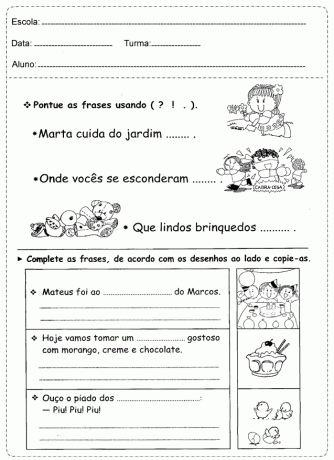

short story
Once upon a time there was a sad, thin, paunchy boy from the hinterland of Pernambuco.
In the damn sun of noon, he was sitting in the dust of the road, imagining nonsense, when a fat vicar on horseback passed by:
"You there, boy, where does this road go?"
— She won't go: we'll take her.
— Cute little guy! What's your name?
— I don't call myself, the others call me Zé.
Paulo Mendes Campos. “To enjoy reading – chronicles”. São Paulo: Attica, 2003. p.76.
Questions
Question 1 – Identify the purpose of who wrote the text:
Question 2 – In the section “—You there, boy, where is this road going?”, the commas separate:
a) an adverbial adjunct
b) a bet
c) adnominal deputy
d) a vocative
Question 3 – “— Funny thing about a figa!”. Mark the feeling, reinforced by the exclamation point, of the vicar in relation to the conversation with the boy:
the joy
b) anger
c) compassion
d) sympathy
Question 4 – In “— It's not going to go: we're the ones going to it.”, the colon introduces:
a) a speech by the boy.
b) an opinion of the narrator.
c) a clarification made by the boy.
d) a quote.
Question 5 – Mark the punctuation mark that was used the most in the text:
a) comma
b) full stop
c) question mark
d) dash
Did you like it? Share this post on your social network
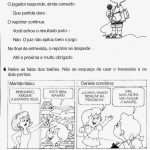 IDEAS OF ACTIVITIES ABOUT STRAND
IDEAS OF ACTIVITIES ABOUT STRAND
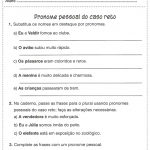 PERSONAL PRONOUN ACTIVITY TIPS
PERSONAL PRONOUN ACTIVITY TIPS
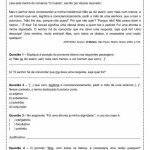 Portuguese Activities About Pronominal Placement
Portuguese Activities About Pronominal Placement
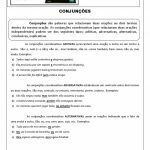 ACTIVITY IDEAS ABOUT EXPLANATORY SETTING
ACTIVITY IDEAS ABOUT EXPLANATORY SETTING
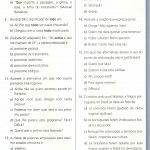 ACTIVITIES ON INDEFINITE PRONOUN FOR THE 7TH YEAR
ACTIVITIES ON INDEFINITE PRONOUN FOR THE 7TH YEAR
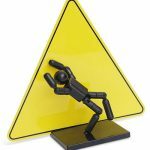 TYPES OF LANGUAGE - SPOKEN AND WRITTEN LANGUAGE
TYPES OF LANGUAGE - SPOKEN AND WRITTEN LANGUAGE
very good material available
This site uses Akismet to reduce spam. Learn how your comment data is processed.

